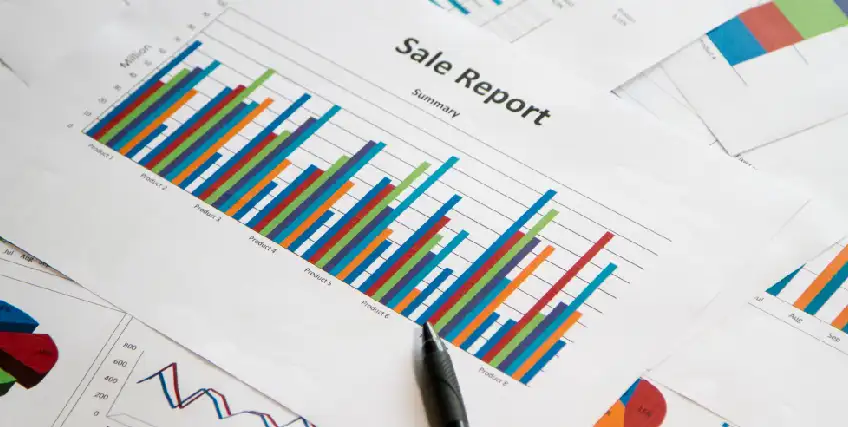Supply Chain Financing Options for Small Businesses
September 08, 2025 | Last Updated on: September 08, 2025

During the COVID-19 pandemic, you may remember hearing about disruptions to the global supply chain. These disruptions led to worldwide inflation, raising the price of everything from gas to groceries.
While things have largely returned to normal, the supply chain isn’t just a global issue, it can be a local one too. Most businesses, big and small, work with a supply chain, and its normal functioning is crucial to business success. When things go wrong in a small business’s supply chain, it can lead to many more problems.
Fortunately, supply chain financing options are available when issues arise or when you’re ready to invest in improvements.
In this article:
- Learn what the supply chain is and why it’s important.
- Explore supply chain financing options, like a business line of credit.
- Learn how to get supply chain financing, from term loans to small business line of credit
What is a Supply Chain?
A supply chain is a network of people, resources, organizations, and activities involved in producing, delivering, and selling a product or service. The supply chain covers every step of the process, from sourcing raw materials to delivering the completed product to the customer.
For example, if your small business sells compression socks, your supply chain includes everything from sourcing the cotton fibers used to make the socks, the production process, any quality assurance checks, and distribution to retailers or end-consumers through an online store.
Importance of Supply Chain for Small Businesses
During the pandemic, the global supply chain became backlogged because many factories and offices were closed, halting the means of production. This had a domino effect on the global economy as businesses experienced delays in getting raw materials, manufacturing them into products, and shipping around the world.
On a global scale, consumers experienced the impacts through severe inflation and shipping delays. However, small businesses took it even harder. A few of the most significant impacts from a broken or backlogged supply chain include:
- Higher prices for raw materials
- Higher production costs
- Higher prices for end consumers
- Reduced inventory
- Shipping delays, leading to unhappy customers
All of these issues force small businesses to dig deep into liquidity to afford normal operating costs. Higher operating costs lead to lower profits or difficult decisions like price increases that can turn customers off your product entirely.
How Financing Can Help Improve the Supply Chain
There are many benefits of supply chain finance. Small business growth requires financial stability and predictability. When supply chain issues arise, you’re facing the exact opposite of stability and predictability. That’s why it’s imperative to try to stay as close as possible to the status quo when facing supply chain challenges.
Small business financing can accomplish that. Whether your typical cotton supplier had a fire at a factory and you’re forced to build a new supplier relationship, your preferred shipping company’s workers are on strike, or a natural disaster hits, financing can help address any supply chain disruption.
That said, financing isn’t just for lean times. You can also use supply chain financing to invest in growth opportunities, purchase more equipment, expand your territory, and improve supply chain operations when things are going well.
Regardless, some important questions to ask include:
- How long do I need funding?
- How much funding do I need to avoid increasing costs for my customers?
- How quickly can I pay back the funding?
- What are the benefits of getting this funding now?
Small business funding can come to your aid when you’re dealing with business emergencies, but it’s also a significant asset for growth.
Financing Options for Supply Chain Needs
Whether you’re navigating a supply chain emergency or you have an opportunity to improve your supply chain, several supply chain financing options can help.
Business line of credit
A small business line of credit is a cross between a small business loan and a business credit card. Like a traditional bank loan, after the application process, you’ll be approved for a set amount of money — your line of credit. Unlike a bank loan with monthly repayment terms, you only pay interest on the amount you use.
Since business lines of credit are revolving, once you’ve paid back what you used, you’ll have access to the maximum credit amount again.
With a business line of credit, you’ll have the flexibility to pay for unexpected business expenses as they arise, as well as regular business needs. You can also use it to invest in growth and expansion, like buying additional equipment to amplify your supply chain or upgrade to better suppliers.
Business lines of credit have lower eligibility requirements than traditional loans, and your annual percentage rate (APR) will depend on your creditworthiness.
Merchant cash advances
In a merchant cash advance (MCA), an MCA provider pays a small business an upfront lump sum of cash in exchange for a percentage of future credit card sales or other accounts receivable. Rather than an interest rate, the business charges a factor rate to determine the full repayment amount.
A small business repays the advance in daily or weekly installments based on sales, so if business is slow due to a sluggish supply chain, you won’t have to repay quickly. When you resolve the supply chain issues and business picks back up, you’ll repay faster. There’s no specific due date; the advance is satisfied when you’ve paid the full repayment amount.
Another similar solution is invoice factoring, in which you sell your outstanding approved invoices or other accounts receivable in exchange for cash upfront. This allows you to improve your balance sheet in the short term while paying a fee to the factoring company.
Working capital loans
When you’re short on cash flow to navigate supply chain emergencies, a working capital loan can give you the short-term influx of cash you need. Short-term loans tend to have repayment schedules of 18 months or less and are easier to qualify for than long-term ones.
With a working capital loan, you’ll get the cash flow you need for short-term supply chain financing without taking on significant long-term debt. They’re available from both traditional lenders as well as online providers.
Term loans
Small businesses looking to grow through supply chain financing may consider larger term loans. These loans have longer repayment schedules — usually longer than two years or all the way up to 25 years — and higher maximum loan amounts.
Term loans can help businesses invest in major improvements or additions to their supply chain, but will saddle them with monthly payments. Likewise, qualification requirements are more rigid, meaning startups, new businesses, and business owners with bad credit may not qualify. If they do, they may have less favorable payment terms, like high interest rates. There may also be penalties for early payments and higher financing costs.
Traditional lenders and alternative lenders both offer small business term loans.
SBA loans
The U.S. Small Business Administration (SBA) offers a variety of loan programs. These partially backed loans are offered through traditional lenders and designed to incentivize financial institutions to approve more small business loans.
The SBA has a variety of options that could serve as supply chain financing, including:
- SBA 7(a) loan program: The most popular SBA loan program offers both term loans and a working capital line of credit to support a variety of business needs.
- Microloans: Microloans offer faster access for small businesses that need small amounts of cash to navigate supply chain emergencies.
- Export loans: Businesses looking to expand overseas or improve international supply lines may use export loans to do so.
Conclusion
Whether you’re facing supply chain issues or you want to grow your business, supply chain financing is a great option. While there are several types of financing available, a business line of credit offers the best combination of accessibility, flexibility, and repayment terms to support your supply chain investments.
FAQs
What is a supply chain?
A supply chain is a network of people, resources, organizations, and activities involved in producing, delivering, and selling a product or service, from sourcing raw materials to distributing the final product to a customer.
What happens when the supply chain is disrupted?
Disruptions to a supply chain typically lead to increased production costs and shipping delays, which can have a domino effect on the rest of the supply chain. Ultimately, a small business may be forced to raise prices to offset the increase in operating expenses, which can alienate customers.
What is supply chain finance?
Supply chain financing is when a funder like a bank or alternative lender provides a business with money it needs to navigate supply chain issues or improve the operational efficiency of a supply chain.
Supply chain finance solutions can help reduce the impact of rising operations costs, allowing you to shoulder additional expenses without passing them onto consumers. Likewise, supply chain financing can fund investments in supply chain improvements like new equipment, more labor, and improved shipping ability.
What is a business line of credit?
A business line of credit is a form of financing that’s a mix of a loan and a business credit card. It’s a revolving credit line from which you can draw money to make business purchases, only paying interest on what you use, rather than the full credit limit. When you pay back what you use, you’ll have access to the full credit limit again.
What are the best financing options to help manage supply chain problems or grow your supply chain?
The best supply chain financing options include a business line of credit, traditional bank loans, or SBA loans.




